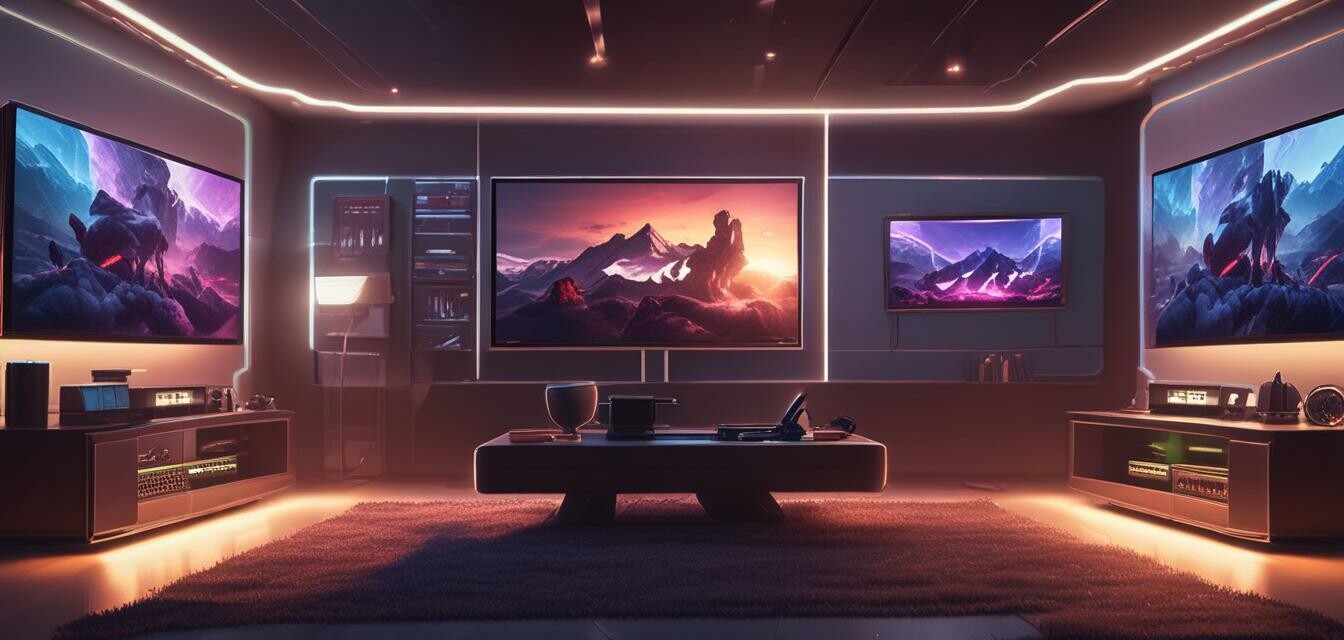
Adapting to new viewing technologies: A gamer’s guide
Key Takeaways
- Stay informed about the latest viewing technologies impacting gaming performance.
- Understand the differences between traditional and next-gen TV technologies.
- Optimize your gaming setup to maximize the benefits of new advancements.
- Explore features like Variable Refresh Rate, HDR, and low input lag.
- Be prepared for the future of gaming by considering how technology is evolving.
The gaming landscape is constantly evolving, and with it, the technologies that support immersive gaming experiences. As we move into 2025, new viewing technologies are becoming increasingly important for gamers who wish to stay ahead of the curve. This guide will explore these advancements and provide insights on how to adapt your gaming setup for the best performance.
Understanding the latest viewing technologies
As technologies advance, gamers have the opportunity to enhance their experience through better visuals and performance. Let’s take a look at some of the key trends currently shaping the gaming television market.
| Technology | Description | Benefits |
|---|---|---|
| OLED | Organic Light Emitting Diode technology providing incredible color and contrast. | Deep blacks, vibrant colors, and wide viewing angles. |
| QLED | Quantum Dot Light Emitting Diode technology enhancing color accuracy and brightness. | Higher brightness and improved color volume. |
| HDR | High Dynamic Range technology improving contrast and color detail. | More realistic visuals with enhanced highlights and shadows. |
| Variable Refresh Rate (VRR) | Technology allowing the display to adjust the refresh rate dynamically. | Smoother gameplay with reduced screen tearing and lag. |
| Low Input Lag | Feature reducing the delay between your controller input and screen response. | Improved responsiveness critical for competitive gaming. |
How to adapt your setup for new technologies
Incorporating new viewing technologies into your gaming setup requires some adjustments. Here are steps you can take to ensure you make the most of these advancements:
- Assess your current equipment: Take stock of your existing TV and peripherals to determine needed upgrades.
- Research compatible technologies: Make sure your gaming devices are compatible with the new TV technologies.
- Optimize settings: Adjust your TV settings to match your gaming needs such as enabling low input lag mode.
- Invest in high-quality cables: Use HDMI 2.1 cables to support high-refresh rates and resolutions.
- Stay informed: Keep an eye on upcoming technologies and trends, such as 8K TVs, which can further enhance your experience.
Popular trends in gaming TVs
Exploring the prominent trends is essential to understanding how to leverage technology effectively in your gaming experience:
| Trend | Details | Why it Matters |
|---|---|---|
| 8K Resolution | Higher pixel counts for crystal-clear visuals. | Potentially enhances the realism in games with compatible devices. |
| All-In-One Gaming Monitors | Combining both TV and PC gaming capabilities. | Versatile options for gamers with different setups. |
| Cloud Gaming Integration | Integration with cloud gaming platforms for easier access. | Reduces the need for powerful hardware, as games are streamed. |
| Smart TVs | Built-in apps that cater to gamers. | Greater convenience for accessing games and online services. |
Conclusion
As we look forward to 2025, staying informed about new viewing technologies is fundamental for gamers aiming to enhance their experience. By adapting your setup and embracing advancements in technology, you can not only improve your gameplay but also enjoy a more immersive gaming atmosphere. Remember to explore our other articles on news in gaming technology and buying guides for more tips on optimizing your gaming experience.
Pros
- Enhanced visual fidelity with modern technologies.
- Improved responsiveness with low input lag and VRR.
- Future-proofing your setup with the latest developments.
Cons
- Cost of new technologies can be high.
- Compatibility issues with legacy systems.
- Potentially steep learning curve with new features.
